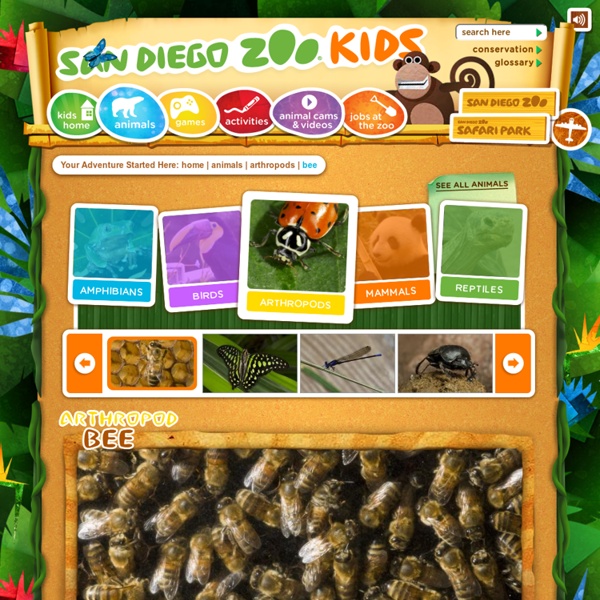



Honey Bee Mystery All across the United States, honeybees are flying away from their hives and dying. Empty hives are causing a lot of worry about some important food crops. Bees give us a lot more than delicious honey. They are pollinators—they enable plants to produce the fruits and nuts we enjoy by carrying pollen from one plant or flower to the next. Animals pollinate about one out of every three bites of food we eat. Professional beekeepers raise honeybees, box them up, and send them on trucks to fields where farmers grow food. California’s almond crop alone depends on about half the bees in the country, about 1.5 million colonies! “The colony is what we call a super-organism,” says Dr. However, explains Pettis, bees are hard to study. Making detective work even harder, these busy insects fly up to two miles away from their hive in search of pollen and nectar from flowers. Researchers do have some ideas about what could be affecting bee health. Text by Catherine Clarke Fox
Bees - Facts About Bees - Types of Bees - PestWorldforKids.org DIET Worker bees gather both pollen and nectar from flowers to feed to the larvae and other members of the colony. HABITAT Bumblebees often nest in the ground, but can be found above ground around patio areas or decks. They will sometimes build their nests in attics or under roof beams. DIET Worker bees gather both pollen and nectar from flowers to feed to the larvae and other members of the colony. Honeybees produce honey from pollen and nectar of the plants they pollinate. Honeybee nests vary in size. Honeybees do sting, but they only sting once. PREVENTIONBecause honeybee colonies can be extremely large and removal can be very messy, only a pest management professional or experienced beekeeper can safely remove a honeybee nest. DIET Worker bees gather both pollen and nectar from flowers to feed to the larvae and other members of the colony.
Bee Stings and Bee Sting Treatments Do we really need to worry about bee stings? The fact is, most bees rarely sting, unless they are provoked or feel threatened. Only females can sting, and would only do so if they felt it necessary to defend themselves or their colonies, honey combs (with honey bees) and nests. The first thing to remember is that prevention is better than cure: leave foraging bees, as well as hives and nests well alone and allow the bees to go about their business in peace. In truth, the real risks from a stinging incident are actually not that great, but it's easy for the dangers to be exaggerated. You can read more about this, along with a few more interesting snippets of information on my 'Quick Facts' link below. Meanwhile, some individuals, such as beekeepers, may develop a kind of immunity, where reactions to stings become less pronounced. Browse over the following links below to find out more: How to Treat If you get stung by a bee, you'll want to know how to treat it. Prevention is better than cure!
Bee Have you heard the expression "busy as a bee?" Honeybees, bumblebees, and a few native bees live in colonies or hives. The bees all work together for the good of the hive. The Queen — From her title, it may sound like the queen is in charge, but she really has little power in the hive. The Workers —Most of the other bees in the hive are females, too. A newly hatched bee works as a cleaner for her first three days. The Drones — These are the few males that hatch in the hive. "Talking" Bees — Stingless bees tell other workers in the colony about a new food source by marking a scent trail between it and the nest.